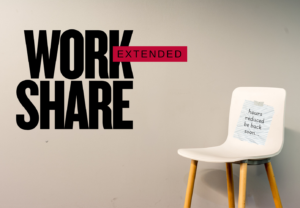My First HR Webinar… continued.
I would agree with all of Michelle’s comments. This was a first for met too and I found it very exciting to participate in both the creation and the delivery of this webinar. Observing the logistical back end processes was interesting as well.
In terms of the webinar content itself, I must admit that I had a few concerns about how we were going to create a presentation that would engage an audience with broad viewpoints, different experiences and unique business needs. However, I think we managed to deliver just enough meaningful information without putting our audience to sleep (my personal fear). It is quite challenging because, as Michelle mentioned, you don’t have the benefit of gauging the impact of your presentation via the body language of your audience. You just have to trust that they are engaged and not making various versions of the “this is utterly ridiculous garbage” face on the other side of the VOIP interface.
The turn out wasn’t as good as we had hoped and that was a bit of a let down for me, considering the effort we put into this project and the respectable number of folks who originally registered to participate. I believe we need to find some way of encourage actual turn out, but I’m not sure what that “thing” is. I’ll leave that to our Marketing guru.
From our own observations and some feedback we received from some participants, we learned that there are a few do’s and don’ts from a technical perspective, to keep in mind when you’re hosting one of these things:
DO:
[listdot]
- Do an on-line practice session for your webinar. Have trusted colleagues and/or friends sign in and observe as the audience will during the real webinar. Solicit and incorporate their feedback into the presentation as necessary. This is essential, as this is when you find out that a particular slide doesn’t work to emphasis your point, or you need some additional script to make a point, or there is an awkward transition from one presenter or section to another. DO NOT skip this step.
- Be mindful of when you are on “live” at the start and end of each webinar; it’s easy to forget that people are signed in and listening as you joke around with your colleagues who are physically in the room with you; never forget the image that you want to relay to your audience.
- Speak directly and clearly into the microphone; if your audience cannot hear you, then what is the point, really?
- Select the quietest space/room you can find to host your webinar. Any noise outside the room, such as conversation, laughing, or construction (in our case) is amplified during the webinar and detracts from the overall professionalism of your presentation.
- Script your presentation, BUT, try not to sound as if you are reading. This is challenging for most of us, as there is a certain amount of pressure and nervousness that accompanies a “live” presentation. There is a delicate balance of professionalism (credibility) and pleasant general conversational approach that you want to strive for. I think ultimately that it takes lots of practice to get there.
- Plant some questions if you have a Q&A session in your presentation. This will give you a chance to showcase your subject matter expertise, and may trigger additional related questions from your audience.
DON’T:
[listdot]
- Put too much information on your slides. Like any good presentation, the visual part is intended to reinforce and illustrate key concepts – not to relay all of the content of the presentation. Maybe it’s just me, but how many people can read a slide full of text AND listen to someone talking at the same time…. I certainly am not that talented.
- Read your slides. Except for quotations. People can read them for themselves. Plus, if all you do is read your slides, then you are not bringing any real value to the audience outside of the visual presentation. What they want to hear is your view and your personal experience with the subject matter presented. Otherwise, it’s just a slide show.
- Try to wing it, unless you are very, very good at improvisation. If you are, then perhaps you should be part of Second City or some other facet of the entertainment industry.
- Focus your content on theory only. People want real information and real ideas that they can use themselves to improve their own situation.
[/listdot]
I’m sure that there are more do’s and don’ts that webinar experts would enumerate for you. These are the key learnings that I took away from this experience, for what’s it’s worth.
I know the next time we do this, it will be that much better. And I’m looking forward to the next time for sure.


 Our HR solutions experts can recommend the right mix of HR outsourced services to make your entry into Canada easier.
Our HR solutions experts can recommend the right mix of HR outsourced services to make your entry into Canada easier.  Pivotal Employment Management Services co-hires your workforce, simplifying entry of your business in Canada.
Pivotal Employment Management Services co-hires your workforce, simplifying entry of your business in Canada. 
















Tips for Flu Season